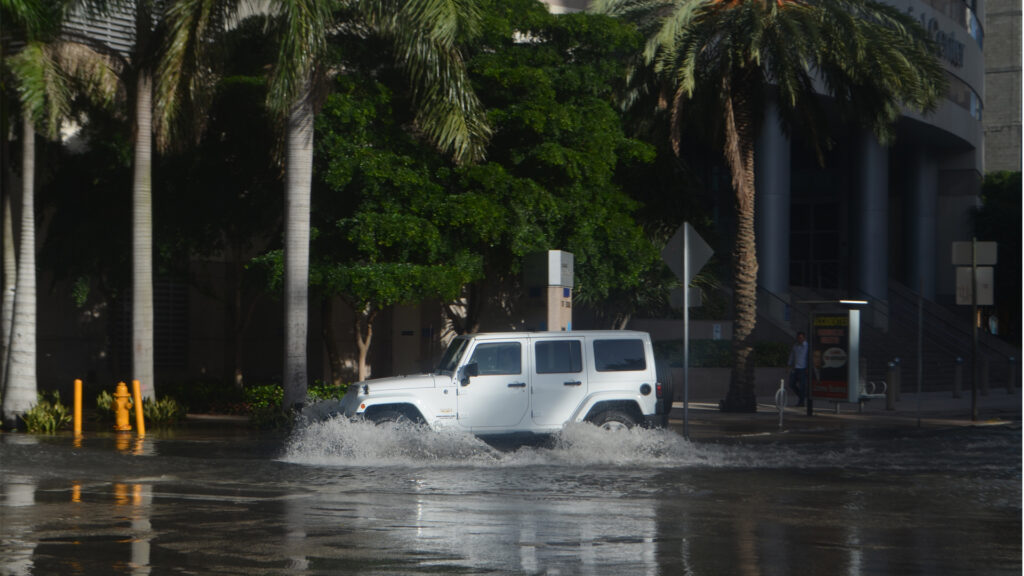By Susan Glickman
According to the National Academies, global average sea level is increasing due to melting land ice and the expansion of warming seawater, both of which are caused by a warming planet. An overheated Gulf of Mexico is driving rising seas, in some cases, rising twice as fast as the global average along the Gulf and the east coast of Florida.

The Journal of Climate finds the level of flooding we expected in 40 years may actually occur in 20 years. We may see faster disruptions along the way as the gulf warms much faster than the global ocean. As a consequence, elevated storm surges made coastal flooding and damages during Hurricane Ian deadlier.
The findings point to one conclusion. It is high time to set an upper limit on sea-level rise in order to protect the viability of Florida’s economy. Only if we aggressively reduce climate pollution can we limit sea-level rise to about 1 to 2 feet by the end of the century. Beyond 2 feet, adapting gets exponentially more expensive.
Communicating the risks of runaway climate change requires a new framework for discussion. We need a new way of talking about this urgent challenge.
Until now, “1.5 degrees” has been the standard language for the global goal for curbing climate change impacts. Embraced by the United Nations Conference of the Parties, few people besides scientists, climate policy wonks and negotiators understand the dire consequences that follow if that number is exceeded.
In fact, many people don’t know that 1.5 refers to Celsius, not Fahrenheit, let alone appreciate the gravity of the warning from scientists: every tenth of a degree of additional heating brings more flooding, deeper drought, hotter heat extremes, bigger wildfires and more rapid sea-level rise.
For example, the “once in 1,000 years” nearly stationary supercell thunderstorm that recently hit Fort Lauderdale resulted in more than 25 inches of heavy rain that lasted for six to eight hours. Widespread flooding stranded people across the city and caused extensive property damage. A warmer climate means more moisture in the air and more climate-fueled weather events like this one.
“Sea-level rise combined with extreme weather poses a significant threat to the viability of living in Florida’s coastal areas as critical infrastructure is lost to rising seas,” said Leonard Berry, founding director of the Center for Environmental Studies at Florida Atlantic University. “Water treatment plants alone represent millions of dollars in extra expense to relocate them away from the coasts. Adapting to these threats by building sea walls and raising roads is only a temporary fix. We must set an upper limit on sea-level rise to reduce the driver of the problem. We must reduce carbon pollution.”
Many Florida politicians have turned their focus to building costly sea walls and raising roads, but unless the pollution driving the problem is dramatically reduced, sea levels will continue to climb, rendering those projects ineffective against the growing amounts of water pounding the coastlines. Bottom line, you can’t adapt your way out of climate change.
Higher sea levels increase the need for more expensive resilient infrastructure, paying more for insurance — if available at all — and to relocate people to safer ground. Residents will suffer more business disruptions from flooding, more traffic jams, higher taxes to pay for retrofitting, sewage system overflows and seawater infiltration of drinking water. Meanwhile, communities may see their tax base shrink as residents relocate to other areas and tourists stop visiting.
Setting an upper limit for sea-level rise makes clear what is at stake and the urgent need to act at a scale to avoid the worst impacts from runaway climate change.
Consequences for crossing the 1.5-degree Celsius threshold are much harder for people to visualize than a limit on sea-level rise. Simulation websites like NOAA and Climate Central show specifically what is at risk — which roads get flooded, which houses are overtaken by the sea and which wastewater treatment systems overflow.
An upper limit for average sea-level rise — say, of 2 feet or of half a meter, a goal that is consistent with the most aggressive emission-reduction scenario — provides a more effective way for people to evaluate how their community will be affected.

Setting an upper limit on sea-level rise will also raise awareness about the worst possible outcome — the disintegration of the Greenland and Antarctic ice sheets — because if the 1.5-degree goal isn’t met, the risk rises that this devastating scenario unfolds.
Greenhouse gas emissions are now higher than at any time in recorded history. Unless the U.S. and other major emitters enact a widespread transition to renewable energy, the world will crack the 1.5-degree ceiling. We have the technologies to do just that.
Florida must set an upper limit on the amount of sea-level rise the economy can withstand. To achieve that limit, businesses, communities and governments must embrace renewable energy and promote policies and programs that reduce their carbon footprint. Recognizing an upper limit for sea-level rise — before it is too late — will help build stronger, more resilient communities and keep Florida’s economy viable into the future.
Susan Glickman, a consultant to ReThink Energy Florida and the Upper Limit Project, has worked on climate and energy issues for more than two decades.
This opinion piece was originally published by the Tampa Bay Times, which is a media partner of The Invading Sea. Sign up for The Invading Sea newsletter by visiting here.



